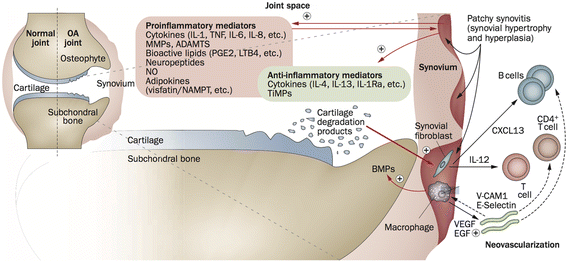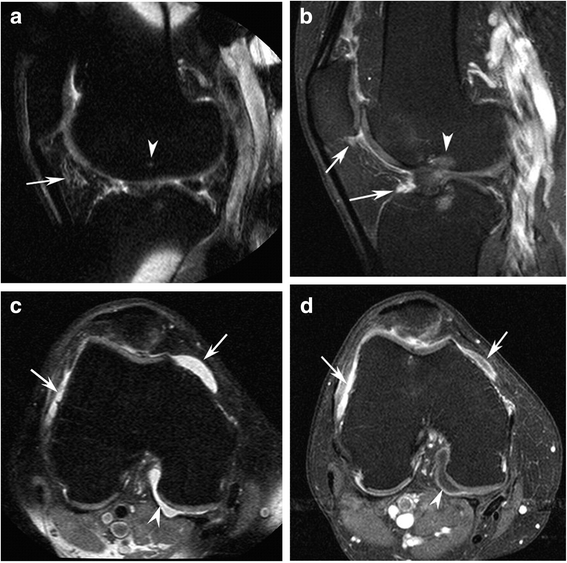Synovitis in osteoarthritis: current understanding with therapeutic implications
- PMID: 28148295
- PMCID: PMC5289060
- DOI: 10.1186/s13075-017-1229-9
Synovitis in osteoarthritis: current understanding with therapeutic implications
Abstract
Modern concepts of osteoarthritis (OA) have been forever changed by modern imaging phenotypes demonstrating complex and multi-tissue pathologies involving cartilage, subchondral bone and (increasingly recognized) inflammation of the synovium. The synovium may show significant changes, even before visible cartilage degeneration has occurred, with infiltration of mononuclear cells, thickening of the synovial lining layer and production of inflammatory cytokines. The combination of sensitive imaging modalities and tissue examination has confirmed a high prevalence of synovial inflammation in all stages of OA, with a number of studies demonstrating that synovitis is related to pain, poor function and may even be an independent driver of radiographic OA onset and structural progression. Treating key aspects of synovial inflammation therefore holds great promise for analgesia and also for structure modification. This article will review current knowledge on the prevalence of synovitis in OA and its role in symptoms and structural progression, and explore lessons learnt from targeting synovitis therapeutically.
Keywords: Epidemiology; Imaging; Osteoarthritis; Pathophysiology; Synovitis; Treatment.
Figures


References
-
- Division UNDoEaSAP. World Population Prospects: The 2015 Revision, Key Findings and Advance Tables. 2016. https://esa.un.org/unpd/wpp/.
-
- Goldenberg DL, Egan MS, Cohen AS. Inflammatory synovitis in degenerative joint disease. J Rheumatol. 1982;9(2):204–209. - PubMed

